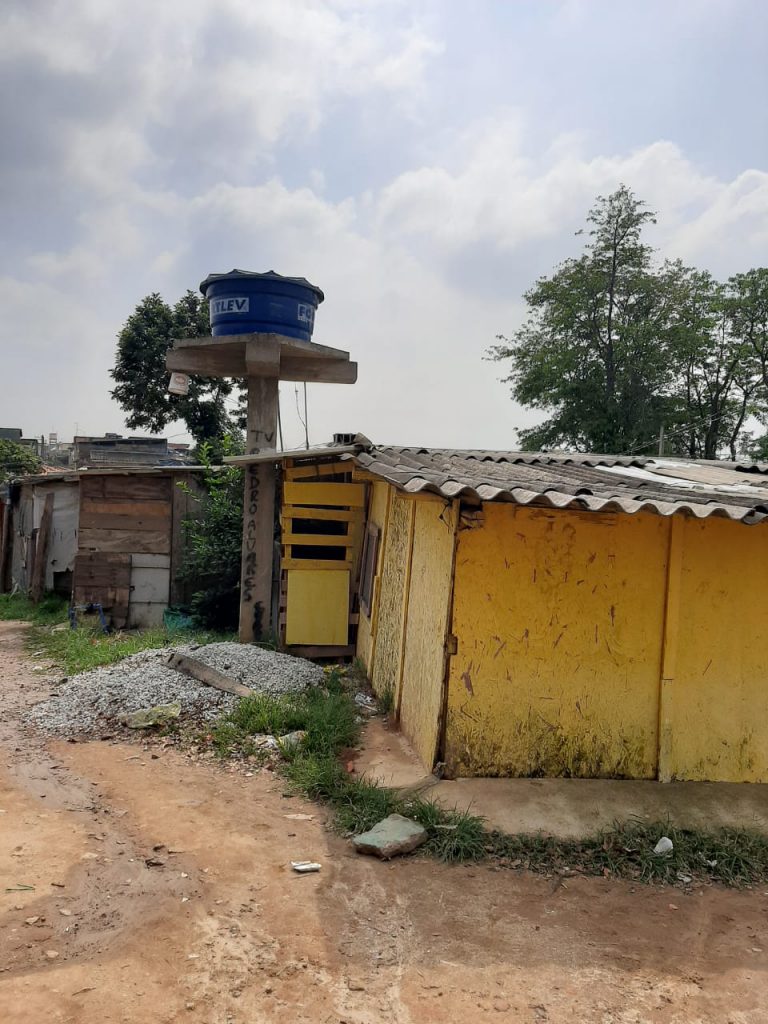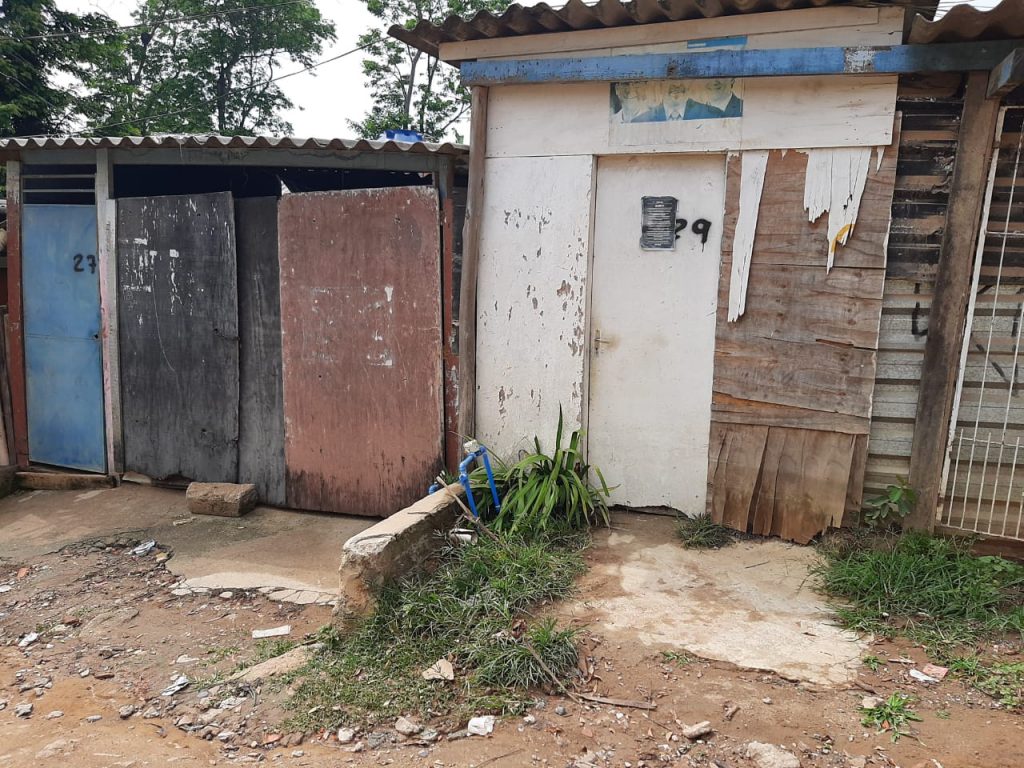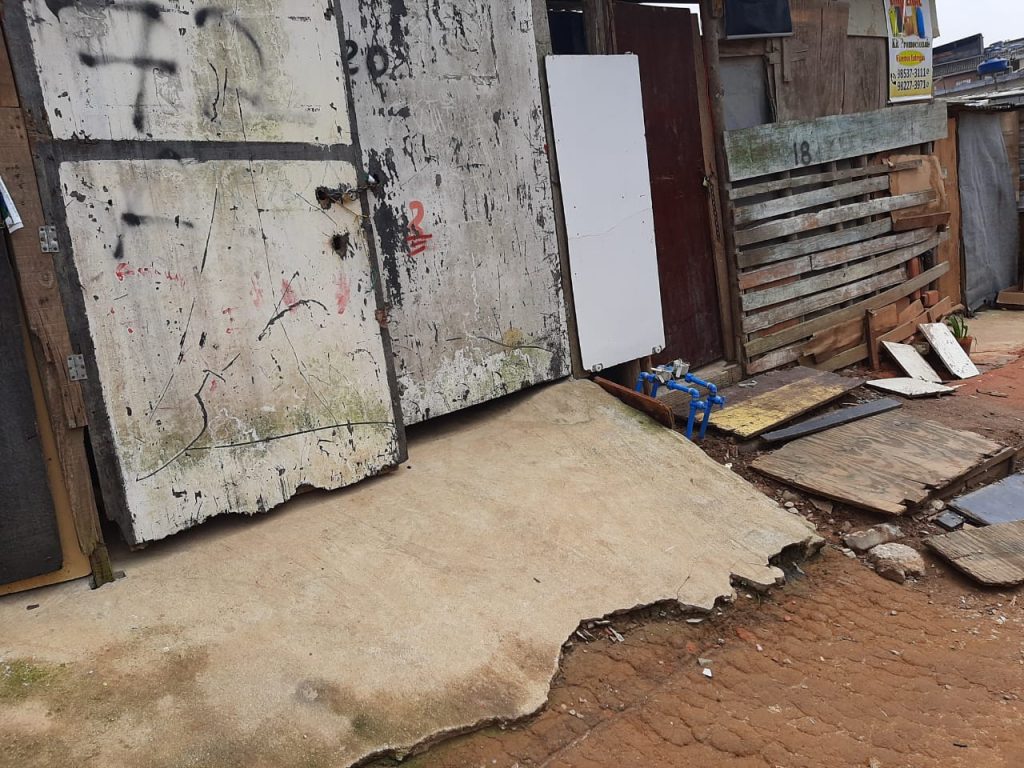
Anchieta, Grajaú district, Capela do Socorro Sub prefecture
The leadership Dona Jô declared herself a woman, mixed race and claimed to work as an administrative assistant. She works at the local association as a secretary. She has lived in Anchieta Occupation for 7 years, working in the movement for the same period. She informed that Sabesp’s service during the occupation is interrupted every day, at 8 pm.
“I arrived here in 2013, right at the beginning of the occupation, you know. I came because I could no longer pay rent … then I heard about this occupation here, in the Grajaú region and I became interested in it, you know. ”
“Because we didn’t have clean water to offer … we were drinking dirty, contaminated, illegal water, you know. It comes through the hoses … and many of them are punctured, they end up mixing with the sewage water ”
“I arrived here through an eviction, right … And then I didn’t know where to go. And through a friend, he brought me into this occupation … I arrived I took a piece of land and made a shack to live in, where I live today. ”
“Because here when we used hose water … Where the hoses punctured a lot, it mixed with sewage water … It was offensive to us, you know. Imagine the children. ”
The resident Marcos is 44 years old, declared himself a man, brown, single and unemployed driver. Born in Passira, Pernambuco. He arrived in São Paulo in 2011. After being evicted from his previous home, in another part of the city. He went on to the occupation in search of a house. Your home is currently connected to the Sabesp network.
The resident Joyce declared herself a woman, 28 years old, brown, single and homemaker. She is from São Paulo and arrived at ocuppation six years ago. Her house has pipes connected to the Sabesp network, but she is still obliged to use gallons for storage. It has no sanitary sewage.
“I’ve been here for six years. My family already lived here. And then, because they live here, I decided to take a piece of land. ”
“It was thanks to the association. The Association ran after it to find out about Sabesp. To put the water network. ”
The Anchieta occupation is located in the district of Grajaú, in the southern region of the municipality of São Paulo. The area started to be occupied in the decade of 2010. Today, approximately five thousand inhabitants live in the community, organized in 1,050 houses.
In terms of infrastructure, most houses are built with wood and / or improvised material and half of these houses are connected to Sabesp’s public water network. Altogether there are 540 connections, leaving 500 houses. The water supply is interrupted daily, always at night. On the other hand, all respondents answered that they have plumbing in the house, for use in the bathroom, taps and sinks in the kitchen.
The main problems are the lack of connection to the network in half of the houses of the occupation and there are no public sewer systems in the community. The waste is channeled through improvised pipes that serve to remove the debris in front of the houses and streets of the community. In the areas of occupation without supply, hoses share the same space as small sewage ditches. In addition, due to the pandemic, Sabesp’s service was interrupted.
The main strategy to guarantee water is the installation of illegal connections to the public network. Residents collectively built alternative water lines. In part of the occupation, there is a community system of hydraulic pumps, small ducts and hoses for distribution between houses without sanitation coverage. Those with a network reported paying for the water bill under the social tariff system. During the pandemic, however, the collection was suspended by Sabesp, with a three-month grace period.



Photos by: Marilene Ribeiro de Souza e Sheila Cristiane Santos Nobre






